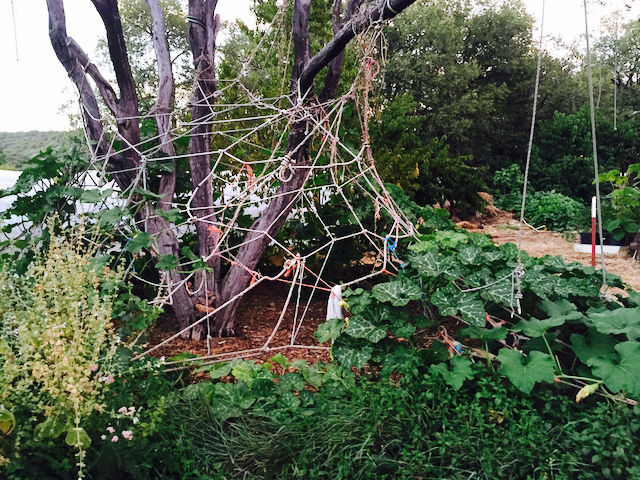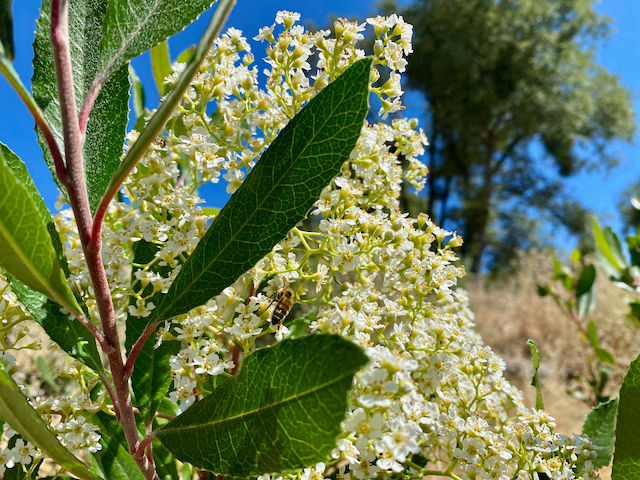Taking a Long-Term View of Life
- Sean Kriletich
- Nov 16, 2022
- 3 min read
Nearly two decades ago I began thinning out dense manzanita from beneath scrubby oaks to create a homestead. I kept many specimens of manzanita because they were both beautiful and native. After five years spent improving the soil, the oak trees had shot up majestically, but almost all the gorgeous manzanitas had died. My friends and I felt that I had done great damage to the eco-system. I had all but exterminated a native plant at its namesake homestead “Manzanita Ridge.”
Back then I was still firmly entrenched in a mechanical view of the world. In common with many in our society, I saw the web of life as a factory, where a single wrench in the gears halts the entire production line, which only restarts when the wrench is removed, and the gear repaired. Studying physics at university only reinforced this view. In fact, the death of a single plant or animal does not stop the entire ecosystem, not even for a moment.
Life systems do not immediately fail when one individual piece is lost. In fact they are designed for cyclical transition and that transition is often in response to a catalytic event. At my homestead, my activities were the catalyst. It turns out that my actions pushed the ecosystem towards its next more complex phase and in turn made it resilient to wildfire. When the Butte Fire swept through in 2015, it did not wreak havoc on my place as it did to the un-catalyzed land directly to the south.
There was indeed an element of truth in my youthful thinking. In the web of life, a truly complex set of catalysts and genes, actions and reactions, cause catastrophic burn scars to evolve into manzanita fields in a single year. And those homogenous manzanita fields transform into complex oak woodlands within several decades. Of course, I’m not advocating for eradicating entire species or sucking the life-giving water from vast portions of the earth’s surface. Life systems do recover from disasters wreaked by humans, geology or weather, but our actions continue to have an enormous impact during that recovery. As physicist Fritjof Capra explains: “Scientists as well as non-scientists frequently retain the popular belief that “if you really want to know the ultimate explanation, you have to ask a physicist,” which is clearly a Cartesian fallacy. Today the paradigm shift in science, at its deepest level, implies a shift from physics to the life sciences.”
It took 50 million years for dinosaurs to evolve into birds and 3.6 billion years for single-celled organisms to evolve into humans, a species capable of realizing anything we can dream of. It is time to start seeing the future through the long lens of Life’s complexity. Multimillion dollar taxpayer-funded fish and wildlife programs to protect individual species such as manzanita simply fail to recognize the interdependence of all phenomena and the redemptive power of the cyclical processes of nature. For example, manzanita only germinates after a fire, quickly forming a monoculture that protects the remaining soil. But that is not where the process ends. Ruminant animals graze on the young manzanita, which they find highly palatable. Their manures enrich and seed the soil, which encourages acorns to germinate. Over the next century those oak seedlings can evolve into a forest - one of the most complex, resilient, and diverse ecosystems on the planet.
When we protect a single species, particularly a transitory one such as manzanita, we artificially halt the evolutionary cycle at that point, stagnating the very processes on which we are dependent. In this case, we also astronomically increase the risk of catastrophic wildfire and halt the evolution of resilient oak woodland. Life is patient and can wait for the next cycle. We humans, on the other hand, cannot afford to wait around and continue to stagnate more and more of the cycles that sustain and support us. Capra points out that: “The recognition that a profound change of perception is needed has not yet reached our corporate leaders, politicians or the administrators and professors of our large universities.”
Now is the time to relegate the mechanical short-term view to the history books and adopt Life’s holistic long-term view. It’s up to us to make that change and with it shift our actions and institutions. The future starts now.





Bình luận